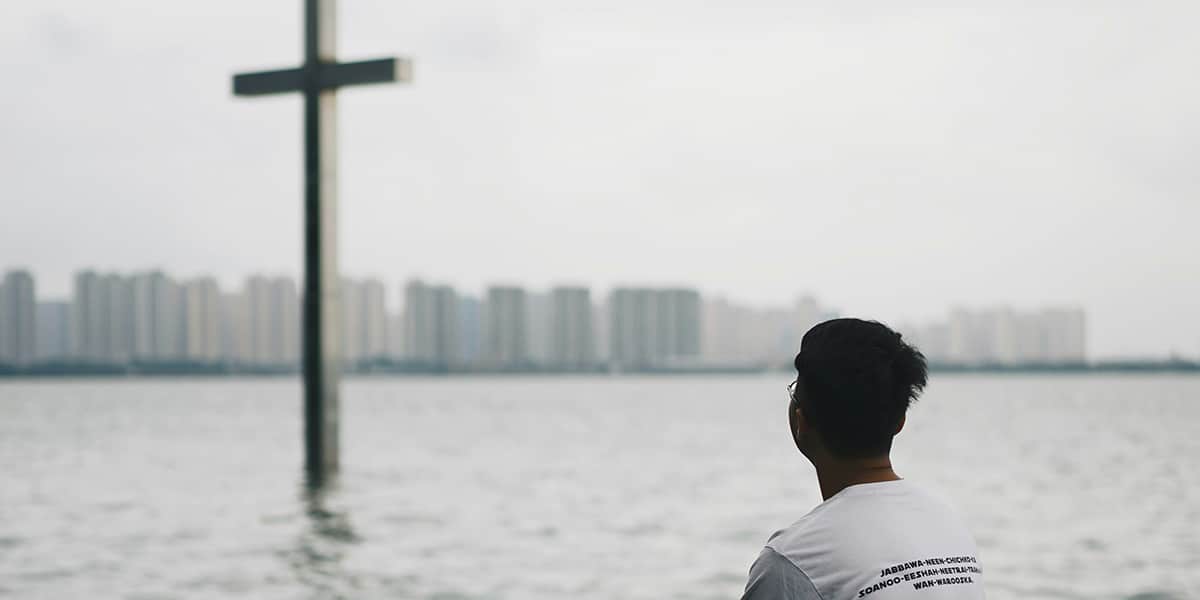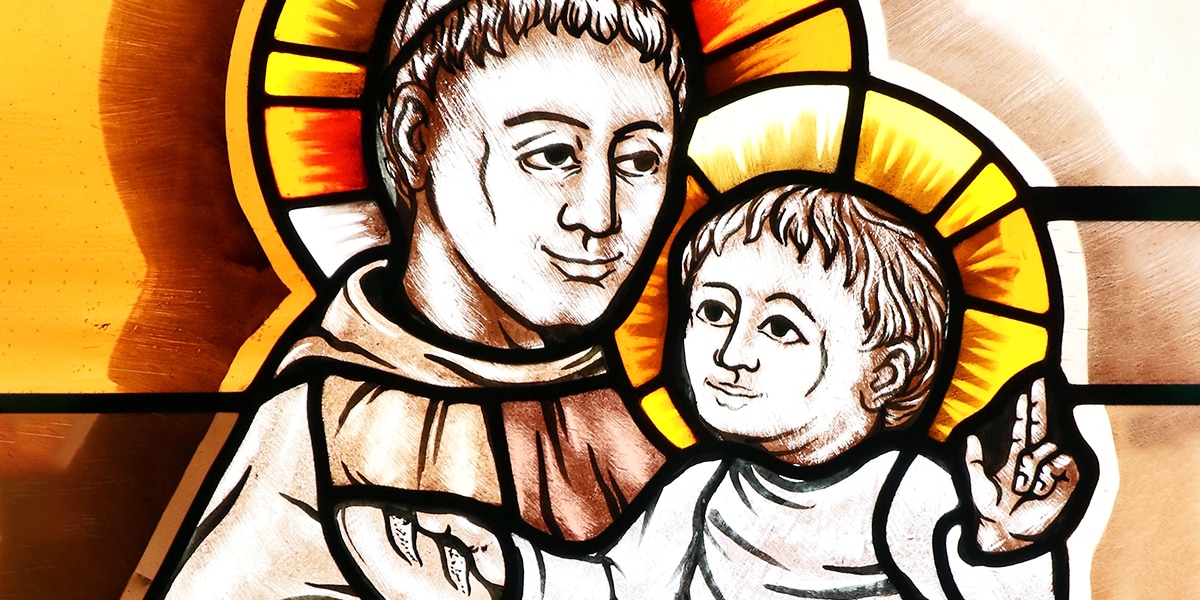The Franciscan tradition is filled with holy men and women, starting, of course, with Francis of Assisi.
Each of the Franciscan Saints is a living Gospel. They have all, in some partial way, embodied—literally incarnated—the challenge of faith in their time and place, and so opened a path that others might follow. Here we’ll look at some of their lives. But among them all, undoubtedly, St. Francis of Assisi offers a special case, one that we’ll look at in some detail before speaking of his followers.
For almost 800 years, St. Francis has been the world’s most popular saint—honored in every land, even by the secular-minded and people of other faiths. This reflects, in part, the winsome qualities of his story: the account of his preaching to the birds, his taming the wolf of Gubbio, his exultant canticle to “Brother Sun” and “Sister Moon.”
But beneath all that, St. Francis stands as one who made the way of Jesus credible and concrete. He set out quite literally to pattern his life on the Gospel. And in doing so, for his countless followers, he offered a distinctive style of discipleship that would forever mark the Franciscan family.
His teachings essentially consisted of the Sermon on the Mount. But it was the way he translated this teaching into a style of living that made an enduring impression on his contemporaries as well as successive generations. The very story of his conversion, which transpired in several steps, dramatized the meaning of “putting off the old person and putting on Christ.”
There was first the moment when Francis encountered a poor leper on the road. After dismounting his horse, he offered the poor man some coins. But then, moved by some divine impulse, he leaned forward to kiss the leper’s ravaged hands. Francis had always been a fastidious person, with an abhorrence of squalor and illness. But in this gesture he was seemingly liberated from a whole identity based on status, security, and worldly success. His life began to take shape around an utterly new agenda, contrary to the values of his family and his world.
There followed the moment when Francis’ father, a wealthy cloth merchant, dragged him before the town bishop, charging him with stealing from his warehouse to provide alms for the poor. Francis admitted his fault and restored his father’s money. But then, in an extraordinary gesture, he stripped off his rich garments and handed them also to his sorrowing father, saying, “Hitherto I have called you father on earth; but now I say, ‘Our Father, who art in heaven.'”
Finally, there was the moment when he was praying before a crucifix in the dilapidated chapel of San Damiano and heard a voice speak to him: “Francis, repair my church, which has fallen into disrepair, as you can see.” At first inclined to take this assignment literally, he set about physically restoring the ruined building. Only later did he understand his mission in a wider, more spiritual sense. His vocation was to recall the Church to the radical simplicity of the Gospel, to the spirit of poverty, and to the image of Christ in the poor.
The spectacle that Francis presented—the rich boy who now camped out in the open air, serving the sick, working with his hands, and bearing witness to the Gospel—attracted ridicule from the respectable citizens of Assisi. But gradually it held a subversive appeal.
Before long, a dozen other young men had joined him. Renouncing their property and their family ties, they flocked to Francis, becoming in time the nucleus of a new religious order, the Friars Minor. Still, the little community continued to expand. With the arrival of Clare of Assisi, a female branch was added to the growing Franciscan family.
What was the appeal? Even his follower Brother Masseo asked this question, only half in jest: “Why you? Why does all the world seem to be running after you, and everyone seems to want to see you and hear you and obey you? You are not a handsome man. You do not have great learning or wisdom. You are not a nobleman. So why is all the world running after you?”
Francis, with characteristic humility, explained that God’s glory shone all the brighter for the weakness of such an obviously “miserable servant.”
Nevertheless, at least part of the answer had to do with his evident authenticity. Those who encountered Francis could no longer maintain that Christ’s teachings were wonderful in theory but impossible to put into practice. But there was more. The example of Francis was not simply edifying but also deeply appealing. He exuded a spirit of freedom and joy. People wanted to be near him, to discover for themselves the secret of his joy. Here was a man who had evidently discovered the way to heaven. Others were eager to follow.
Walking into the Unknown
That attraction has continued ever since. For many men and women since the time of Francis, his particular example has offered a distinctive key to the Gospel—or, as Pope Francis might say, “a new way of seeing and interpreting reality.”
Among the central features of this key: the vision of a Church that is “poor and for the poor”; a resolve to take seriously Jesus’ example of self-emptying love; a concern for peace and the good of the earth; a way of mercy and compassion; above all, a determination to proclaim the Gospel not only with words but also with one’s life.
Francis’ first followers joined him in walking into the unknown, improvising as they went along. Later that path became more regularized and even institutionalized.
Within years of the founder’s death, his order was buffeted between factions divided over how literally to adhere to the Poverello’s (“little poor man’s”) extreme ideal of poverty. There were those who leaned toward greater structure and discipline, while others favored Francis’ more spontaneous, charismatic style. Yet for all the diversity within the broad Franciscan movement, the figure of St. Francis remained the essential touchstone and guide.
Even as Francis lived, the attraction of his way began to spread through Europe. With his authorization of a Third Order, he opened a way for laypeople to follow on the Franciscan path, and with the ferocity of a wildfire, Franciscan fever spread throughout Europe.
Poor and Rich
A surprising number of the early Franciscan saints were princesses and other children of royalty. St. Elizabeth of Hungary, for example, was the child bride of the prince of Thuringia. Her natural instinct for poverty was magnified by the arrival of Franciscan missionaries in Germany. She was captivated by the story of Francis and Clare and put on the habit of a Franciscan tertiary.
Though her husband supported her works of charity, his family disapproved, and following his death they drove her from the palace on a wintry night, carrying only her newborn child.
There was St. Agnes of Bohemia (d. 1282), another princess, who spurned marriage and the privileges of her station to become a Poor Clare. St. Clare herself wrote to her: “Though you, more than others, could have enjoyed the magnificence and honor and dignity of the world, and could have been married to the illustrious Caesar with splendor befitting you and his excellency, you have rejected all things and have chosen with your whole heart and soul a life of holy poverty and destitution. Thus you took a spouse of a more noble lineage.”
The Franciscan saints have come in many forms. Some of them lived in organized religious communities, while others were immersed in the world of family, work, and secular life.
They have included theologians like St. Bonaventure (d. 1274), renowned preachers like St. Anthony of Padua (d. 1231), penitents like St. Margaret of Cortona (d. 1297) and St. Roch (who was cured of plague by the ministrations of a dog), mystics like St. Angela of Foligno (d. 1309), hermits and vagabonds (St. Benedict Joseph Labre, d. 1783), poets (Blessed Jacopone de Todi, d. 1306, who composed the famous “Stabat Mater“), missionaries like St. Francis Solano (d. 1610) in South America or Venerable Antoni Margil (d. 1726), who founded the mission of San Antonio in Texas.
The Martyrs and the Incredible
Of course there were also martyrs, beginning with St. Berard and his companions (d. 1220), who were killed while preaching in Morocco. (Of them, St. Francis observed: “Now I can truly say I have five Friars Minor.”)
Among those who followed were Blessed John Baptist Bullaker, a Franciscan priest martyred in 1642 while carrying out his clandestine mission to England, and St. Maximilian Kolbe (d. 1941), a Polish priest who volunteered to take the place of a prisoner selected for execution in Auschwitz.
Among the Franciscan saints there were many renowned for signs and wonders. St. Joseph of Cupertino (d. 1663), in the ecstasy of prayer, was observed to fly through the air. The Italian St. Pio of Pietrelcino (better known as Padre Pio), like St. Francis before him, bore the marks of the stigmata. Some underwent great adventures, such as Blessed Odoric of Pordenone, a 14th-century Italian friar who was inspired to undertake an extraordinary journey that took him from Italy to Baghdad, India, China, Tibet, and home again (at which point he was instructed in a vision of St. Francis to stay put).
Venerable Maria of Jesus of Agreda, a 17th-century Spanish abbess, reported that she frequently made mystical flights to the New World, where she evangelized a tribe called the Jumanos.
These men and women all lived in different times and places. And yet they are linked by a family resemblance that traces back to their holy founder. Among the notable features: evangelical zeal, humility and simplicity of life, closeness to the poor, a spirit of prayer, and a certain freedom from the cares of a world preoccupied with greatness, power, and grandiose ambitions.
The Spirit of St. Francis
The influence of St. Francis of Assisi extends beyond the company of his avowed followers. There are movements with no official Franciscan connection, yet which bear the spirit of Francis.
One thinks of the Catholic Worker Movement, founded by Dorothy Day and Peter Maurin, which embraces a radical spirit of voluntary poverty, while engaging in the works of mercy and the witness for peace. The Community of Sant’Egidio in Rome promotes the cause of reconciliation, engages in service to the homeless and those with AIDS, and campaigns against the death penalty.
In his choice of a name, Pope Francis has embraced the vision evoked by St. Francis.
In those who promote the cause of interreligious dialogue, who practice nonviolence, who show care for creation, who remember the poor and respond with mercy and compassion, we can see the true spirit of St. Francis. No doubt, in his choice of a name, Pope Francis has embraced the vision evoked by St. Francis, and demonstrated anew the relevance of his witness for the renewal of the Catholic Church and care for a planet in peril.
Among those inspired to follow this path, each has in one way or another been struck by the question that came to St. Ignatius of Loyola, the founder of the Jesuits, whose dramatic conversion was prompted by his meditation on the saints: “What if I should do as St. Francis did . . . ?” Another translation of that question might be: What if I were to live as if the Gospel were true? For many men and women over the past 800 years, it was the image of St. Francis of Assisi that made them believe this was possible.








